The Prohibition in the United States was only a formal ban on alcohol because, informally, according to some statistics people drank more alcohol between 1920 and 1933 than ever before.
Many people took advantage of the situation and began producing alcohol, selling it, transporting, importing and not to mention – drinking it. It was usually produced by countrymen and sold to the owners of pubs in the cities. The ones who benefited the most weren’t certainly the ones who produced it but rather the ones who hold the networks of its sale.
When it comes to the “Goodfellas” in the States, their story began with the Prohibition. And it didn’t take long for it to turn into a horror movie of murders. All, for the sake of keeping the hierarchy in the right shape and profits in the right direction. Things got worse when drugs took the place of alcohol in the same networks created during the Prohibition.
And all the mess culminated during the Great Depression when rebels tried to take their revenge on the government in the only ways they knew.
Very few people got filthy rich, many people got killed, and the rest were still poor. And drunk and drugged from time to time.
Al Capone
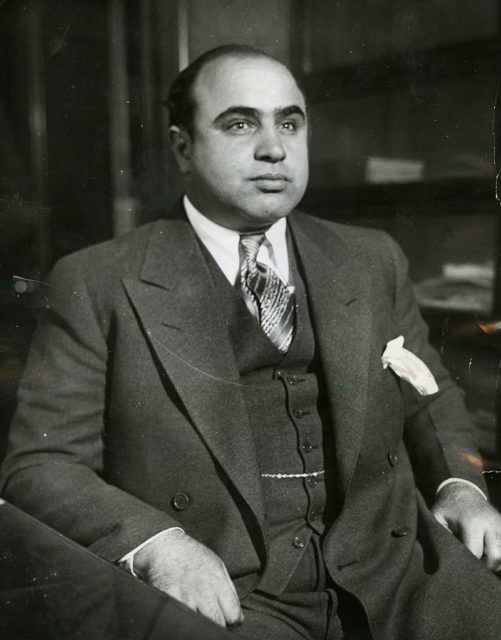
Al Capone was the child of poor Italian immigrants in Brooklyn, New York and lived the “American dream” in his own way – by becoming one of the most successful gangsters in American history.
The Prohibition period was certainly the “Golden Age” for Al Capone, who made a fortune in bootlegging, prostitution, and gambling.
Hence, it is not a miracle that he became a millionaire before he was 30.
However, he demonstrated his gangster spirit much earlier, by quitting school at 14 to join a street gang.
He got married at the age of 19 and had one son, Sonny.
During a fight in 1917, Capone got his face slashed by the brother of a girl he offended. His face was left with three indelible scars which earned him the nickname that he hated for the rest of hs life – “Scarface.”
While in Brooklyn, Capone worked for the mobster Johnny Torrio, and after Torrio moved to Chicago, he recruited his old gang one by one to work for him in Chicago. So, Capone moved there and never left. Except for when he went to prison.
Torrio first became the head of the criminal network in Chicago, but after he was shot, he left the city, making 26-year-old Capone his successor.
The man loved publicity and liked to talk to reporters which made him a celebrity in his time. He never felt guilty for supplying “pleasure” to the Chicagoans. His defense was: “Ninety percent of the people of Cook County drink and gamble and my offense has been to furnish them with those amusements.”
But it wasn’t only amusement that he furnished. He was also responsible for many violent acts in the city. The most famous of all those acts was the St. Valentine’s Day Massacre in 1929 when he ordered the assassination of seven rivals. He was never charged.
After years of avoiding prosecution by bribing police officers and public officials and threatening witnesses, he was finally was finally convicted and arrested in 1929. This was largely due to the actions of Federal Agent Eliot Ness, who became as famous as Capone for bringing him down.
He was released in 1930. Only a month later the Chicago Crime Commission released its first-ever list of the city’s worst criminals; Capone was named Public Enemy No. 1.
He had been nailed again on the orders of President Herbert Hoover and in 1931 was indicted on charges of tax evasion.
He received the highest fine given for tax fraud up to that point, $50,000, and was sentenced to 11 years in prison.
After serving two years at the U.S. penitentiary in Atlanta, Capone was moved to the recently opened federal prison on Alcatraz Island in San Francisco Bay, which made him one of the first prisoners there.
He was released in 1939 to receive treatment for syphilis at a Baltimore hospital.
In 1940 he was one of the first people to receive penicillin for syphilis, but it was too late for him.
Living a low-profile life, Capone died in 1947.
John Dillinger
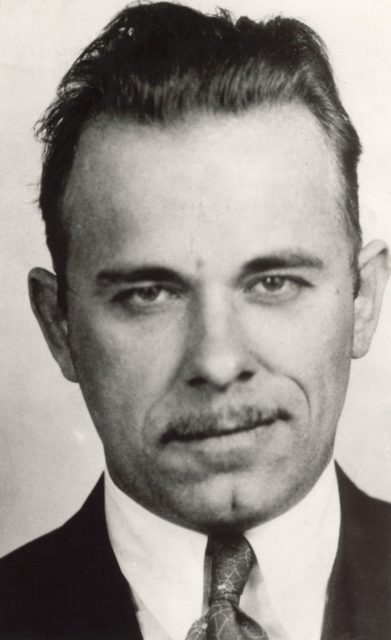
John Dillinger was another Public Enemy No. 1. His bank robberies during the Great Depression earned him that title.
To avoid being arrested for boosting a car, Dillinger enlisted in the U.S. Navy. However, he couldn’t endure discipline for very long and deserted for good in 1923.
He certainly couldn’t live without trouble too. In 1924, at the age of 21, Dillinger was arrested for robbing a grocery store.
The prison was an educational center for Dillinger: he learned the skills required for being a criminal and was tutored by the Midwest’s most hardened convicts.
When Dillinger was released after eight years, he put his theoretical knowledge into practice. He trained by holding up grocery stores and restaurants before pursuing a career in bank robbery.
He didn’t forget about his prison-mates. He organized the escape of ten convicts, among whom were “Handsome” Harry Pierpont, Charles Makley, and John Hamilton. He had been imprisoned himself during their escape, but his freed friends returned the favor by liberating him, gunning down the county sheriff in the process.
Besides robbing banks, Dillinger and his gang-mates were amusing themselves by looting police stations. Once they emptied the gun cabinets in Auburn and Peru in Indiana, supplying themselves with Thompson submachine guns, shotguns, rifles, tear gas guns, bullet proof vests, and more than a dozen pistols.
After numerous bank robberies and victims, prison years were ahead for Dillinger. He was arrested in Tucson, Arizona in 1934 and confined to the jail in Crown Point in Indiana to await trial. But he escaped from prison again; this time, on his own and with a phony gun.
He got through the guards with the wooden gun before ensuring his escape with a Thompson submachine gun. Once he got it, he stole a car and fled to Chicago.
Only three days later he was back on track, joining the gangster Baby Face Nelson and others to knock over a bank in Sioux Falls, South Dakota.
He was so popular not only among public officials but among the folks that he paid underworld plastic surgeons to change his appearance.
The procedure proved excruciating, and Dillinger was decidedly unsatisfied with the results. Upon looking in the mirror, he supposedly exclaimed, “Hell, I don’t look any different than I did!”
The price on his head soared to $25,000 which was enough for Dillinger’s friend Anna Sage to betray him. She asked only for part of the reward money and to help her legally stay in the country.
Dillinger, his girlfriend Polly Hamilton, and Sage went to see the Clark Gable crime film “Manhattan Melodrama” at Chicago’s Biograph Theater. Agents were all over the entrance of the theater when Dillinger got out. Struggling to get his gun from his pocket, he was shot dead at the scene.
Although the total loot of Dillinger’s robberies was around $500,000 (roughly $7 million in modern day currency), the government spent some $2 million trying to catch him.
Many people sympathized with Dillinger, and he became even more popular after his death. Even though state authorities tried to keep the date of his burial a secret, 5,000 people showed up at Dillinger’s funeral.
Pretty Boy Floyd
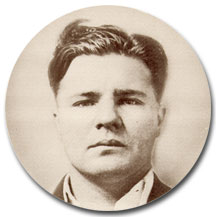
The Great Depression turned many desperate people to crime. It’s hard to say if they were criminals or victims. One of them is the famous Pretty Boy Floyd.
He certainly tried to earn an honest living on his farm, but since drought brought him desperation and starvation, he turned his mind to illegal activities.
He was arrested for a first time at the age of 18 when he stole $3.50 in coins from a local post office. After three years, he was arrested again for robbing a payroll delivery in St. Louis.
In 1929 Floyd moved to Kansas City where he befriended the local criminals. Together with two friends from his prison years, he began robbing banks around Missouri and Ohio.
Meanwhile, a local prostitute gave him the nickname “Pretty Boy” which he hated as much as Al Capone hated “Scarface.”
He was eventually arrested in Akron, Ohio in 1930 for the murder of a police officer. He was convicted to 12 to 15 years in Ohio State Penitentiary but jumped through the window of a speeding train and escaped.
He went to Toledo and became acquainted with Bill “The Killer” Miller. Together they went on a robbing adventure across several states and played the role of Robin Hood during the Great Depression.
He gained nationwide popularity for his crimes. After he killed a federal agent and a bounty of $6,000 was put on his head by the Oklahoma governor.
Even though it was never clear if he was involved in the “Kansas City Massacre” which ended up with the deaths of four law enforcement officers, J. Edgar Hoover used the incident to pressure and empower the investigation against Floyd.
After John Dillinger was killed, Floyd succeeded him as Public Enemy No. 1 and on October 22, 1934, was shot by local law enforcement officers and FBI agents.
Meyer Lansky
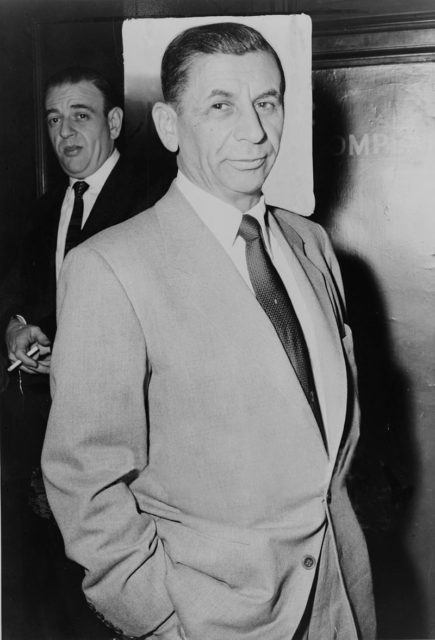
Meyer Lansky was born Maier Suchowljansky in Poland before his family emigrated to the States.
While at school as a child, Lansky was a mathematical prodigy, an ability which he later used in the gambling world.
Lansky and Bugsy Siegel were lifelong friends and partners in crimes. Siegel had saved Lansky’s life a few times, for which Lansky was eternally grateful. The two established the Bugs and Meyer Mob and later befriended with Lucky Luciano, and together they created the “National Crime Syndicate” in the United States.
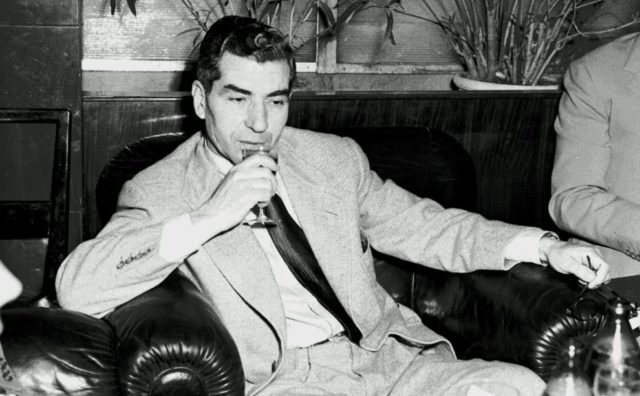
Known by the name “the Mob’s Accountant,” Lansky was one of the greatest crime organizers of his time. He was a member of the Jewish Mob and hold good relations with the Italian Mafia. His bootlegging and gambling businesses blossomed during the Prohibition period and allowed him to create an empire.
Lansky built a gambling empire which spread from Las Vegas to Cuba, from The Bahamas and London. However, he lost his holdings in Cuba after Fidel Castro came to power in 1959.
Lansky and his connections had the technical expertise to manage them effectively based upon Lansky’s knowledge of the true mathematical odds of most popular wagering games.
When Al Capone got arrested for tax evasion, Lansky realized that he could easily become the next one, so he eventually bought an offshore bank in Switzerland to launder the money.
During World War II, Lansky was also instrumental in helping the Office of Naval Intelligence’s Operation Underworld, in which the government recruited criminals to watch out for German infiltrators and submarine-borne saboteurs.
Fearing prosecution for various offenses, in 1970 Lansky attempted to retire and immigrate to Israel, aiming to use the country’s Law of the Return, which grants citizenship to anyone of Jewish heritage. But after two years his attempt for permanent residency was rejected due to his criminal record and he was deported to the United States.
He got back to the States in 1972 and indeed was arrested on his arrival in Miami. However, due to his poor health and severe illness, he was sent home to die.
Even though Lansky was the conspirator of various murders and even though he might have laundered more money than Capone, Dillinger and Floyd together, all he was convicted of was illegal gambling.
He died in January 1983 in Miami Beach.
Bugsy Siegel
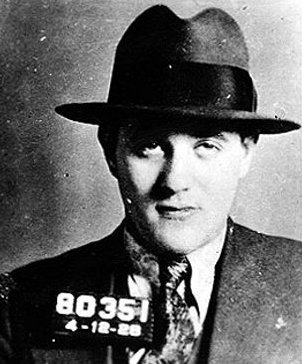
Siegel was an Austro-Hungarian Jew who immigrated to the States with his family. He couldn’t stand the impoverished state of his family, so he became a gangster at an early age. By 1931, he was rich enough to buy an apartment in Manhattan’s Waldorf Astoria Towers.
He managed to do so with his friend – Meyer Lansky, with whom he shared all businesses and money launderings throughout his life.
He hated his nickname “Bugsy.” He once said – “My friends call me Ben, strangers call me Mr. Siegel, and guys I don’t like, call me Bugsy, but not to my face.”
On his way to success and fame, he not only conspired but also took part in numerous high-profile killings.
He was part of the infamous “Murder Inc.”, a syndicate which ensured that the work of the Italian and Jewish Mob would their businesses would run smoothly without any “obstacles.”
In the mid-1930s, he moved to Los Angeles to spread his and Lansky’s empire. He had a secret desire to become an actor, but the furthest he got with it was to become a friend with Holywood celebrities like Cary Grant, Frank Sinatra, and Jean Harlow (who later became the unofficial godmother of his daughter). However, he was a big movie fan and once he organized a screen test for himself.
In 1938, Siegel’s immature desire for wealth and amusement led him on an expedition to Costa Rica in a search for buried treasure. He traveled with nine aristocrats from Hollywood.
Before the start of WWII, Siegel went to Italy to sell explosives to Mussolini, but the deal went off because of the poor quality of the weapons.
In 1945 came with a brilliant idea of building a hotel and casino in the middle of Nevada’s desert with $6,000,000, that came from the New York syndicate. The hotel was a great success since the moment it opened, but the thought of returning the money didn’t make Siegel happy, so he delayed with his payoffs.
The bosses weren’t happy with his behavior and had two meetings held in Havana, Cuba, where Lansky and Luciano convinced them to give Siegel more time. And they did, indeed. But after the third meeting Lansky wasn’t powerful to change his decision and Siegel was killed on June 20, 1947.
However, since it was never proved what happened and who shot Siegel, his murder is unsolved till today.
Frank Costello
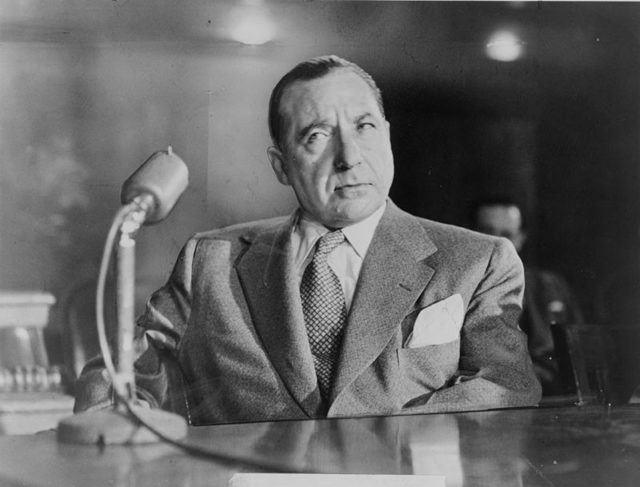
Frank Costello was an Italian-American gangster and crime boss, Boss of the Luciano crime family and was nicknamed “The Prime Minister of the Underworld.”
When Costello was a boy, his older brother introduced him to gang activities and by the age of 13, he was already in a local gang.
In 1918, Costello served ten months in jail for carrying a concealed weapon. After he was released he swore that he would never carry a gun but use his brain instead. Perhaps, what he thought it was not worth going to jail for just carrying a gun around, but rather a real crime.
First, he met Charlie “Lucky” Luciano and they immediately became friends and partners. Then he met Meyer Lansky and Benjamin “Bugsy” Siegel. Together they were kind of a “Dream Team” for robberies, theft, extortion, gambling and narcotics. The Luciano-Costello-Lansky-Siegel alliance prospered even further with the passage of Prohibition in 1920.
His business blossomed and that led to the Castellammarese War which was a war for dominating the Italian underworld in New York, fought between the members of the Joe “The Boss” Masseria where Costello belonged and the protectors of Salvatore Maranzano. Maranzano was the winner and he declared himself capo di tutti capi (“boss of all bosses”). But he didn’t stick to that title for very long. He was murdered soon after his “victory.”
While Costello worked for Luciano, he was consigliere of the Luciano family and the most prominent boss of all who worked for Luciano. Unlike Luciano and his underboss Vito Genovese, Costello didn’t like drug trafficking and wasn’t part of it.
In 1936, Luciano was convicted to 30-50 years in prison for running a prostitution ring and in 1937 Genovese was convicted of murder. They went to prison and later were deported to Italy. Luciano chose Costello for his successor as the boss of the Luciano family.
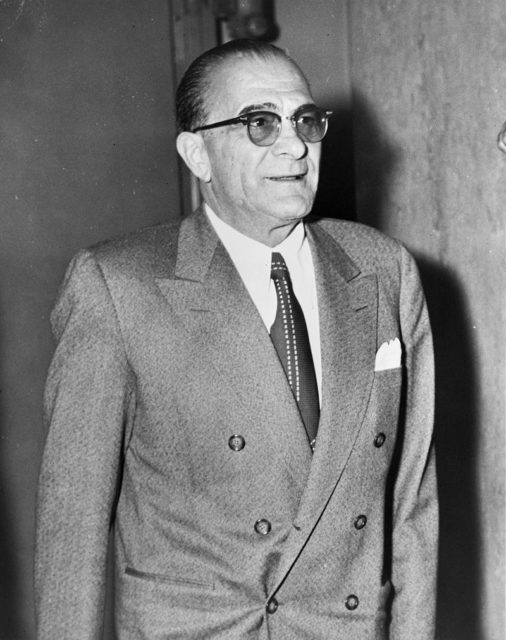
Costello was a respected boss who worked well with the other bosses. However, Genovese returned to the US and his only ambition was to kick Costello from the “throne” and to become the new boss of the Luciano family. Step by step he was close to succeeding in his intention. At the end, all he needed to do was to kill Costello.
And he tried, but Costello survived. Afterward, Costello and Genovese made peace before the Apalachin meeting in 1957. Genovese became the new boss and Costello retired.
Nevertheless, Costello was always respected as a boss until his death in 1973.
Albert Anastasia
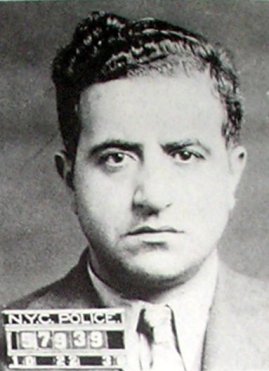
Anastasia began his career at an early age as a hitman. In 1919 he was working on a ship with two of his brothers and all of them together managed to escape from the ship when it landed in New York City.
By 1921 he was already convicted of a murder but due to a legal technicality, he was released the next year. However, not for long – in 1923 Anastasia was convicted for two years in prison because of illegal possession of firearms.
By the end of the 1920’s Anastasia was already associated with Costello, Luciano, Genovese and other members of Cosa Nostra.
In 1928 he was once again convicted of a murder but the key witness disappeared before the trial.
In 1931, together with Vito Genovese, Joe Adonis, and Bugsy Siegel, he took part in the assassination of Joe Masseria.
He was known as the most feared hitman, being charged with a murder almost every year. And each time he somehow managed to escape.
As a gratitude to Anastasia’s loyalty, Luciano appointed him as the head of the Syndicate’s enforcement arm, Murder, Inc. It is estimated that Murder, Inc. committed between 400 and 1000 murders, many of which have never been solved. And according to some reports, 60 murders have been committed by the hand of Anastasia.
In 1942, Anastasia joined the U.S. Army but was honorably discharged in 1944.
During his whole criminal career, Anastasia worked for the Mangano brothers. At some point, he became their underboss. After they were both killed, Anastasia became the boss of the Mangano family.
It was widely assumed that Anastasia was responsible for the murders of Vincent and Philip Mangano, even though he never confessed.
The death of Anastasia was part of Genovese’s ambition to gain the title of boss of the Luciano family. In order to do that, Genovese had to kill both Costello and Anastasia. It was a long process of planning and gaining trust among the other bosses and associates but at the end, Genovese finally managed to do what he wanted.
Even though Costello’s assassination wasn’t successful, the murder of Anastasia was.
In 1957 Anastasia was killed in a barber shop by two hit-men. Later it was claimed that he laughed during his murder.
Carlo Gambino
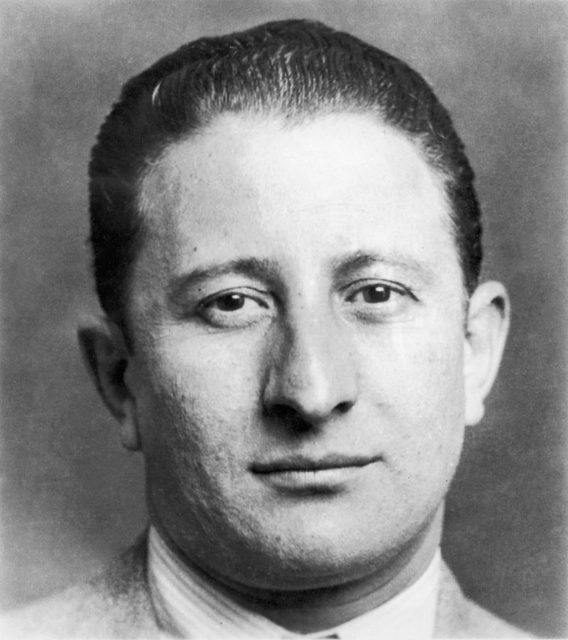
Only one was The Godfather and that was Carlo Gambino.
Gambino became a made man at the age of 19 in Sicily. Afterward, he left for the US to live and work with hid brother-in-law Paul Castellano.
Gambino was one of the few Young Turks who decided to end the Castellammarese War and to form a national syndicate.
In 1931, when Anastasia was made the underboss of the Mangano brothers, he took Gambino as his capo.
Gambino married his first cousin and they had four children together – three sons and one daughter. While he was a crime boss, mafioso, mobster, rum runner, businessman, and a racketeer, he was also a family man and lived with his wife and children in a modest house in Brooklyn.
After the death of Vincent and Philip Mangano, Anastasia became the boss of the Mangano family with Gambino as his underboss.
As Genovese was working on his project to become “boss of the bosses” and was “buying” or killing people for his aim, in 1957 he convinced Gambino to turn against Anastasia, Costello, and Luciano. What Genovese didn’t know was that Gambino was playing on both sides, siding with Luciano to prevent Genovese from gaining what he wanted.
Even though Genovese was formally crowned, in 1959 while waiting for a large shipment of heroin in Atlanta he was arrested by the FBI and sentenced to 15 years in prison.
After many deaths and imprisonments of opponents and allies, Gambino made his way to becoming “boss of all bosses”. He had a prominent career as mafioso and died of heart attack in 1976 at the age of 74.
